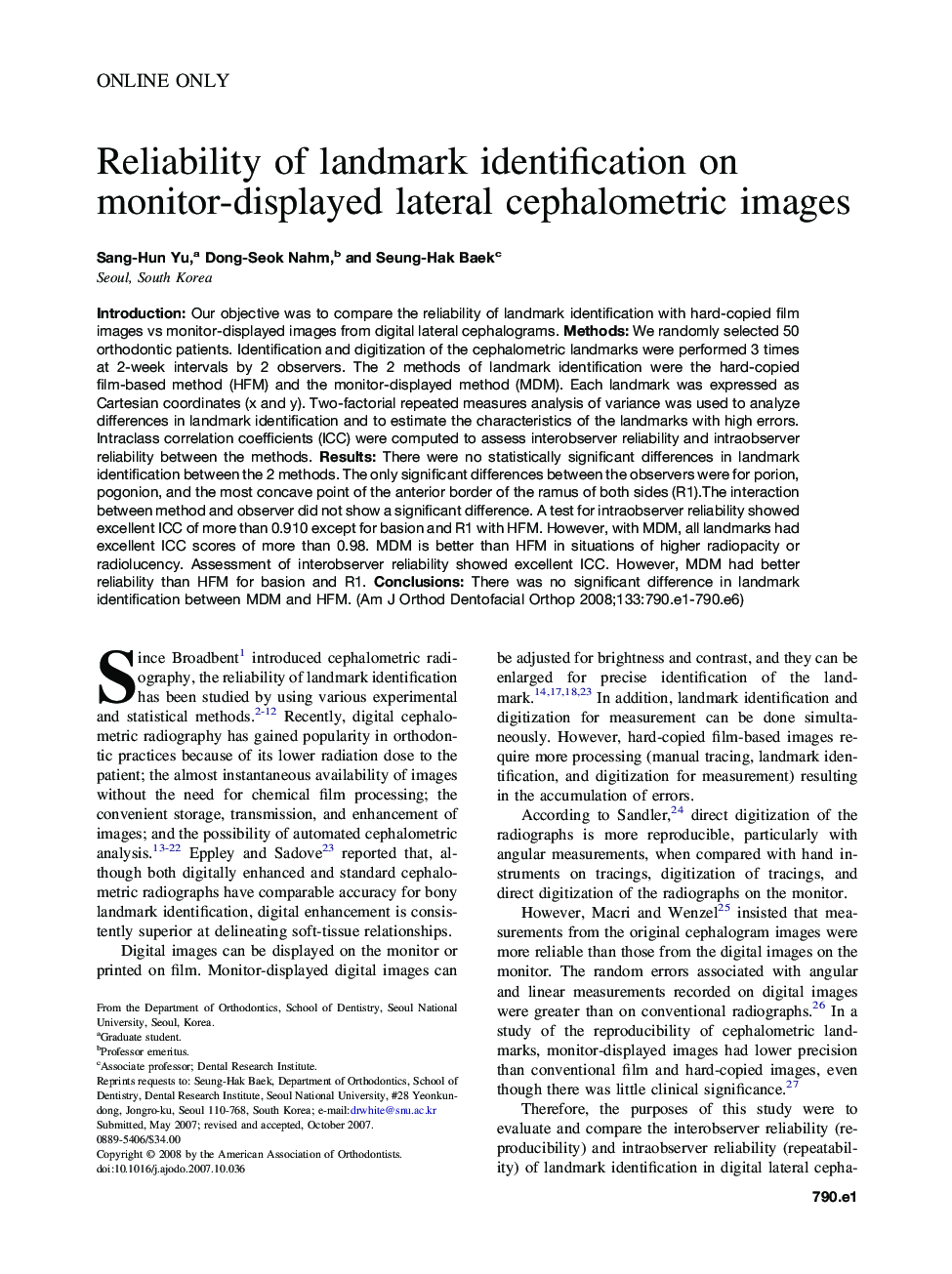| Article ID | Journal | Published Year | Pages | File Type |
|---|---|---|---|---|
| 3119080 | American Journal of Orthodontics and Dentofacial Orthopedics | 2008 | 6 Pages |
Abstract
Introduction: Our objective was to compare the reliability of landmark identification with hard-copied film images vs monitor-displayed images from digital lateral cephalograms. Methods: We randomly selected 50 orthodontic patients. Identification and digitization of the cephalometric landmarks were performed 3 times at 2-week intervals by 2 observers. The 2 methods of landmark identification were the hard-copied film-based method (HFM) and the monitor-displayed method (MDM). Each landmark was expressed as Cartesian coordinates (x and y). Two-factorial repeated measures analysis of variance was used to analyze differences in landmark identification and to estimate the characteristics of the landmarks with high errors. Intraclass correlation coefficients (ICC) were computed to assess interobserver reliability and intraobserver reliability between the methods. Results: There were no statistically significant differences in landmark identification between the 2 methods. The only significant differences between the observers were for porion, pogonion, and the most concave point of the anterior border of the ramus of both sides (R1).The interaction between method and observer did not show a significant difference. A test for intraobserver reliability showed excellent ICC of more than 0.910 except for basion and R1 with HFM. However, with MDM, all landmarks had excellent ICC scores of more than 0.98. MDM is better than HFM in situations of higher radiopacity or radiolucency. Assessment of interobserver reliability showed excellent ICC. However, MDM had better reliability than HFM for basion and R1. Conclusions: There was no significant difference in landmark identification between MDM and HFM.
Related Topics
Health Sciences
Medicine and Dentistry
Dentistry, Oral Surgery and Medicine
Authors
Sang-Hun Yu, Dong-Seok Nahm, Seung-Hak Baek,
